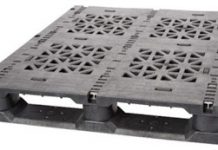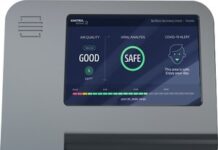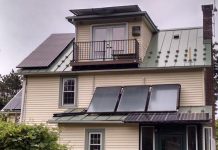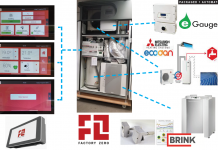On Monday, I wrote that I wouldn’t buy a house without an energy audit. For now, I’m in the minority, but I don’t expect that to last. Each of these trends is likely to lead to more homes getting energy audits:
- Rising energy costs: as energy prices rise, knowing what to do to improve your home’s energy efficiency will become more valuable.
- Weak real estate market. Now that the boom is past us, new home builders need to put more effort into providing and advertising a quality product in order to attract buyers and stay in business. One relatively easy way for a new home builder to differentiate his product from existing homes is to make them energy efficient. By advertising such efforts, new home builders will raise the general awareness of the importance of good insulation and proper sealing in homes, both new and old.
- Expected Greenhouse Gas Regulations. The consensus among scientist is that man made climate change is unequivocally happening, and that we must take immediate action to avert its worst effects. Politicians are likely to seize on improved energy efficiency as a cost-free way to reduce carbon emissions (which they are.)
Energy auditors will benefit from all these trends, and the industry is entering into a period of rapid expansion. The makers of the tools they use will benefit as well.
Tools of the Trade
What tools do energy auditors use? Blower doors, flow meters (although some just use plastic trash bags), digital pressure gauges, combustion analyzer, Hand held smoke, low-e coating detectors, Kill-a-Watt appliance testers and, the tool only a tiny fraction of the attendees had but most want: Infrared (IR) Cameras (beginning to replace infrared thermometers.)
Among these, infrared imaging seems like the most exciting investment opportunity. (Note: I am not talking about the images you can take using a filter and a standard digital camera… they go much farther into the infrared spectrum, and allow fine detection of temperature differences.)
Not only are IR cameras in an early stage of adoption among energy auditors, as prices fall, I expect a host of other applications to emerge. Indeed, there are already a host of applications for IR cameras, most of which have been recently made possible by the advent of uncooled IR cameras. Until recently, in order to image in the infrared, the imaging chip had to be cooled to below the temperature of the image subject. In practice, this meant that IR cameras had to be cooled with liquid nitrogen, which made them too awkward for use in mass markets.
Energy auditors and building inspectors can use them to locate leaks, do fault detection in HVAC equipment, as well as diagnose insulation problems.
When it comes to energy efficiency, quick diagnostics of mechanical problems are key, and not just in home energy use. There are a host of applications, including veterinary, electrical, and automotive. The utility industry uses infrared cameras to diagnose problems at substations and transmission lines to avoid close-up inspections in high voltage areas.
Another application which will be interesting to those of us who expect increased efforts to reduce Greenhouse Gas (GHG) emissions is the ability of specially tuned IR cameras to see volatile organic compounds (including potent GHGs such as methane) as they leak into the atmosphere.
IR Imaging Companies

The only public company with a large presence in IR imaging is FLIR Systems (NasdaqGS: FLIR), which also sells their cameras and night vision equipment to the military and other government bodies such as homeland security and law enforcement. The largest competitor in the home inspection market is Fluke, a privately owned general instrumentation company.
FLIR seems to have a strong lead in consumer awareness. Most of the searches I did researching this article eventually led me to FLIR cameras. I also know that FLIR actively markets to the home inspection industry: I sat in on a presentation at the 2007 Energy Star Summit, and no other IR camera manufacturers were present.
In addition, their GasFindIR video camera seems to be the leading tool for the gas leak detection application mentioned above.
Valuation
FLIR is growing at about 20-25% a year, with most analysts expecting this growth to continue. The stock price has doubled in the last year. It has a trailing P/E of only 18, still quite low for a growth stock. If I were a growth investor, I’d see this as a red-hot opportunity. Correction: FLIR’s P/E at the time of writing was 36, a typical growth stock valuation. The error arose because I got the number from Yahoo!, where it had been confused because of a stock split. I like to think I would have been more careful valuing a stock I intended to buy.
I’m always reluctant to buy after a stock has doubled in less than a year, and company insiders have been selling the stock, which also make me cautious. I’ll be keeping my eye on this one, knowing that FLIR may never come down to a price at which I’m ready to buy. I have a feeling that a year from now I’ll be telling stories about "The one that go away."
DISCLOSURE: Tom Konrad and his clients do not have positions in FLIR.
DISCLAIMER: The information and trades provided here are for informational purposes only and are not a solicitation to buy or sell any of these securities. Investing involves substantial risk and you should evaluate your own risk levels before you make any investment. Past results are not an indication of future performance. Please take the time to read the full disclaimer here.









Isn’t FLIR trailing PE 35, rather than 18?
Sergei:
Thanks… That’s what I get for just taking the number from Yahoo… I now note their P/E was off for a couple days because of a stock split.